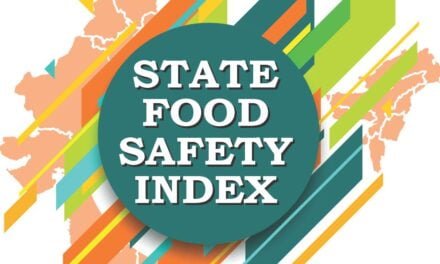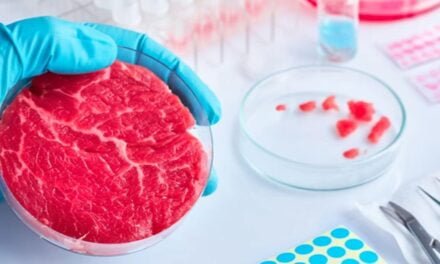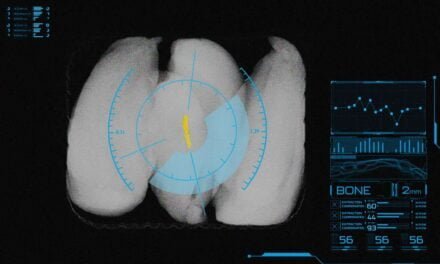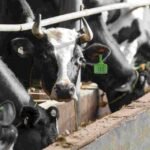India’s meat and poultry industry has huge potential, given the favourable infrastructure and policy guidelines. The fast-food restaurants and eating joints serving traditional meat products are playing their role in increasing meat and poultry consumption, thereby catalysing the growth of the meat industry. However, the new legislation and fear of cow vigilantes have restrained the meat and poultry industry, according to Rajat K. Baisya.
Table of Contents
India has the distinction of having the world’s highest population of livestock. The livestock population in the country is estimated at about 515 million of which cattle population stands at around 200 million. And poultry population is at 750 million. And in spite of this, our meat and poultry processing industry did not find any place in the global reckoning.
The reason can be traced to our large vegetarian population estimated to be over 70%, the domestic market, therefore, is restricted. The other reason is inadequate or even absence of cold chain infrastructure to distribute the meat and meat products within the country. In the domestic market, meat would mean only goat meat and poultry would only mean chicken.
Meat and Poultry Processing: Advantage India
- India has the world’s largest population of livestock.
- India produces around 5.3 million MT of Meat and 75 bn eggs annually.
- India is the largest producer of buffalo meat and 2nd largest producer of goat meat.
- The current processing levels in poultry are 6%, while for meat it stands at 21%.
- Poultry is a highly vertically integrated industry in India and matches the efficiency levels of many western countries.
- Government of India has taken steps for modernization of municipal abattoirs to provide safe and hygienic meat to consumers.
Buffalo Meat Exports
In India, beef refers only to buffalo meat (carabeef), as the slaughter and sale of cow meat remain banned nationwide. The cow is considered a sacred animal that provides milk for infants and newborns, but the fact of the matter is that buffalo milk is the main source of milk supply in the country. India sustains its position as the largest milk producer globally, with a total production of 239.3 million tonnes in 2023-24, roughly 25% of the world’s total milk output.
Buffalo meat dominates both domestic consumption and international trade, since the cow is widely revered and strictly protected. Official policies and cultural values mean that India’s beef industry consists overwhelmingly of buffalo meat exports, making the country the world’s second-largest beef exporter, with revenues exceeding $3.8 billion annually in 2024-25; buffalo meat exports are projected to reach about 1.65 million metric tons in 2025 as global demand rises.
Impact of Cow Slaughter Laws
The cattle trade and, more particularly, the interstate cattle trade have suffered because of the new legislation. The government, however, exempted a few states where there were either resistance and or religious sentiments from the other religious groups, and this included states like Kerala, Goa, Assam, Tamil Nadu, Karnataka, Telangana, Arunachal Pradesh, Mizoram, Meghalaya, Nagaland, and Tripura. These are the states where there are no restrictions on cow slaughter.
The unproductive cows were earlier slaughtered for meat but now they have to be fed by the farmers or owners which they are not willing to do so. As a result, these cows are seen to be roaming free feeding on street garbage and creating traffic nuisance in cities and in villages they destroy farmers cultivation and harvests. Those who have been housed in cow shelters are fed at ex-chequers cost. But it is said that in Rajasthan even cow urine also has a market.
Types and sources of meat in India
Coming back to the meat processing, of all different types and sources of meat in India, poultry is the largest source of meat, contributing about 50% of all meat production and consumption, and buffalo meat is about 20% of the total.
Poultry meat is the major source of meat for domestic consumption, whereas buffalo meat, which is exported as beef, is the major source of meat in international trade. The largest pig producing state in the country is Assam. Pig meat is only 6.5% of the total meat source and consumption in the country. Goat meat is another major constituent of total meat consumption in the country. It is estimated that goats contribute about 14.5% of the total meat production in India.

Livestock rearing economy is dependent on the various products made out of them. In terms of value output, milk and milk products contribute 65% of the total value of livestock economy followed by meat and meat products contributing 20%, Dung about 7% and eggs 4%. The total meat production in the country is said to be 7.4 million tonnes and egg production is about 88 billion.
Regional Leaders in Production
Uttar Pradesh contributes about 17% of the total milk production and 18% of the total meat production of the country and Tamil Nadu contributes 19% of the total egg production in the country. The largest meat-producing state in the country is Maharashtra and the largest poultry producing state is Andhra Pradesh. Of the total of 88 billion eggs that the country produces 87% are from improved fowl, 12% from desi (local) fowl, and only 1% are from duck eggs.
The animal slaughtering takes place both in registered as well as unlicensed and unregistered slaughterhouses. As of 2021, there were 4,671 slaughterhouses in India that were registered or licensed with the Food Safety and Standards Authority of India (FSSAI). The number of small-scale meat retail shops is 25000, and the number of abattoirs with meat processing facilities approved by APEDA is 77.
As for beef, we export buffalo meat, with the market being somewhat restricted to countries such as Vietnam, Malaysia, Egypt, Indonesia, and Saudi Arabia. Vietnam alone accounted for 48% of the total Indian meat export at 840 thousand MT, followed by Egypt (9.4%), Malaysia (9.3%), Indonesia (4.6%), and Saudi Arabia (4.4%) of the total export of 1.8 million tonnes exported in 2016.
Key Export Destinations
- Vietnam remains the largest importer of Indian buffalo meat, accounting for approximately 46% of total exports in 2023-24, with volumes near 565,000 metric tons.
- Malaysia absorbs around 14% of exports, followed by Egypt at about 13%.
- Indonesia and Iraq collectively take up roughly 12% of the market—these shares show modest increases from earlier years as demand in the Far East and Middle East grows.
- In 2023-24, total buffalo meat exports were approximately 1.29 million metric tons, valued at close to US$ 3.74 billion, indicating a stable export volume compared to the previous cycle.
- Saudi Arabia, once a leading market, accounted for a smaller but steady share alongside Iraq and other emerging countries
Evolving Meat Processing
Frozen buffalo meat is exported to the countries by established processors including Allanasons which acquired a modern abattoir from Brook Bond in the early eighties which had a capacity to slaughter 500 buffaloes every day. This is an integrated plant and everything from the animal is used for the productive purpose including blood and skin.
Brook Bond could not run it profitably and subsequently sold it to Allanasons which is managing these modern meat processing facilities at Aurangabad since then. This plant is reportedly not running in full capacity. However, Allanasons is the large frozen and chilled meat exporter in the country. Allanasons has its own network of dealers and distributors of its products in the middle east countries and thus has an edge over others. In processed meat products, processing both goat meat and chicken for the domestic market as well as for export there are a couple of players who are operating on a larger scale and have their own certified modern meat processing plants.
Some of these plants have both abattoir and meat processing facilities while some are only meat processors and they source meat from the registered abattoirs. A large number of processors are there in Uttar Pradesh and Maharastra who are regular exporters of fresh frozen meat as well as processed meat products. Some of them also established their own brands and cold chain network in the domestic market. Popular amongst them are Lazzez, Al Kabeer, Al Sami, Al Nasir, etc.
Pig meat is not widely sold in India except in markets of the north-eastern part of the country. The largest pig production and consumption is also in this part of the country. Star hotels serve the pig meat products like sausages and salamis but mostly have their own small processing units. Pig rearing is not done in an organised fashion as yet. However, of late, a few years ago a plant has come up near Guwahati in Assam to process and sell pig meat. They are gradually expanding. This venture was started by three young local entrepreneurs and they have also managed to get the first funding.
Poultry’s Dominance
In poultry processing, there are many players in the market. The biggest player is Venky’s which has an all India network and they also have modern integrated facilities and process plants. Many smaller poultry farms spread across the country source chicks from Venky’s hatchery to grow and finally sell in their locality. The success of the business of meat and poultry can be traced in select states. That may the reason why Andhra Pradesh is called Poultry capital and Maharashtra is called the meat capital of India. Post-implementation of the law preventing cow slaughtering, the meat industry has gone through some difficult phase.
In poultry, we will shortly see the chicken legs from the US. It is so cheap that it is likely to invade the local market when the earlier embargo and restriction of their entry was withdrawn last year. The dressed frozen chicken market and more particularly chicken legs market is likely to explode putting meat sellers in the local market at risk of losing business when US production of frozen chicken legs and chicken breasts invade the Indian market on a large scale. US chicken legs will out price the local production and supply to gain market share.
Foreign Ventures in Poultry
Godrej Agrovet has set up a modern poultry processing plant in Mumbai in a joint venture with Tyson Foods of US which has 51% equity in the venture and Godrej Agrovet 49% to form Godrej Tyson Ltd to produce both frozen dressed chicken, chicken portions such as legs and breasts as well as chicken snacks. The company seem to be doing well and has now set up yet another plant in Bangalore to produce chicken snacks like Chicken nuggets. Godrej Tyson produces and sells frozen chicken segments under Good Real Chicken and Snacks like nuggets under the Yummiez brands. This is the only multinational in meat processing in India.
Fast Food Drives Demand
The fast-food restaurants in India are helping the growth of the meat industry. Notably among those are McDonald and KFC. They are the largest buyers of chicken and goat meat for their restaurants. Both KFC and McDonald faced a lot of resistance in the market to introduce their burger and fried chicken but ultimately they succeeded. The restaurants and eating joints serving meat products of traditional types such as kababs like sheek, shammi and reshmi kabas are really playing their role to increase the meat consumption and thereby catalysing the growth of the meat industry as such.
Opportunities for Growth
The meat and poultry industry in India has a very big potential given the favourable infrastructure and policy guidelines. The fear of beef and cow slaughtering has put the meat industry into a restraint. But for the poultry industry the growth can be much higher. In spite of all the constraints the meat and poultry industry is still able to deliver double-digit growth which is reported to be around 12.5%. This sector has a lot of growth opportunities and can attract foreign direct investment to exploit both local and also global opportunities.
After Venkateshwara Hatcheries (Venky’s), the only other large modern facilities is the Godrej Tyson Food venture. Venkateshwara occupies a special place in the Indian poultry industry. It has pioneered the concept of parent franchising operations and popularised cage farming. Venky also introduced in India the concept of inactivated vaccines and combination vaccines. They have set up a 100% export-oriented egg powder plant in Hyderabad. Focusing on the global market, there is scope for modern poultry processing and meat processing, attracting investment from international players. India, as a country, offers opportunities in this sector where we can attract global investment.
The author is the chairman of Strategic Consulting Group and served as Professor and Head of the Department of Management Studies, IIT Delhi.

Have a news or topic to share with industry? Write to us editorial@pfionline.com















